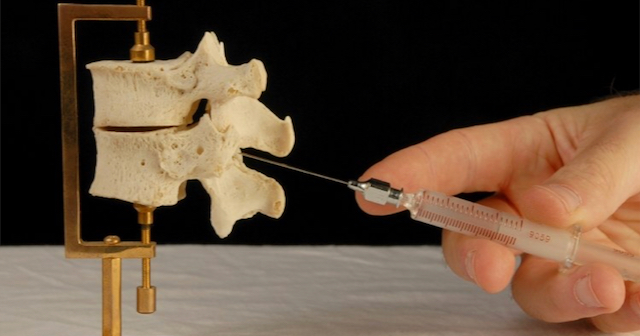By Carol Gray, LMT, CST, RPYT, ERYT-200
I have been thinking a lot about epidural anesthesia for childbirth. Among those who have experienced it, birth is almost universally described as painful. Who wouldn’t want a drug or procedure that takes away the pain? Clearly, most pregnant people in America want this. It is by far the mainstream way to give birth.
When Did It All Begin?
What I’m wondering about is how this all got started…
Epidurals began to gain popularity around the time that we invited pregnant people’s intimate partners into (what was then called) hospital delivery rooms. Is there a connection?
Robert Bradley and the Birth Coaches
While the natural childbirth movement had been steadily chugging along since the 1940’s, the 70’s ushered in a new era. Robert Bradley, author of Husband Coached Childbirth, became the new guru of the movement. Dr. Bradley advanced the idea that pregnant people could give birth without drugs if they had a coach. DRUM ROLL … enter the (mostly) men…
Embracing Dr. Bradley’s ideals, we invited our partners (actually demanded their presence) into the hospital delivery room, but we didn’t stop at that. We also expected them to assume a new role – coach – of a sport they had probably never watched or played.
Childbirth Preparation Classes
Ill-prepared for this new (impossible) role, our partners began to attend childbirth preparation classes where they learned to massage, relax and coach the patterned breathing techniques that promised to deliver a pain-free birth. The problem is the techniques don’t really work. At best they help people cope with the pain, but they don’t take it away.
Prior to the epidural era the partners went home, went to work, went to the bar or waited in a waiting room for a glimpse of the new baby through a window. Pregnant people’s female partners were marginalized into obscurity.
Seeking a Way Out of the Pain
When people experience pain in labor they usually look for a way out. When people experience pain in labor their intimate partners usually experience emotional distress. Doctors and nurses are eager to fix the pain and the emotional distress with epidurals. When laboring people ask for an epidural, their partners usually agree that it’s a good idea, regardless of their prior plans. When laboring people’s partners suggest an epidural, the laboring people often agree – again, in spite of what they had planned before the labor began. Most people in childbirth preparation classes say they would like an unmedicated birth, but only a small fraction of them actually experience one.
The Rules
Now on to THE RULES that we (who are assigned female at birth) are expected to follow in our daily lives (also known as cultural norms):
1. Don’t have sex in front of strangers. Hospital rooms are chock full of strangers, by the way. This one goes beyond the cultural. It’s also physiological. In case you didn’t know, birth is an episode in our sexual lives. Sexual intercourse/outercourse/play, labor, birth and lactation are all regulated by the same hormones. The environment most conducive to female orgasm is, not surprisingly, the same as the environment most conducive to a normal labor and birth. Elements would include privacy, safety, quiet, warmth, few distractions, etc.
2. Put other people’s needs ahead of our own -– like the emotional needs of our partners who are distressed to see us in pain.
3. Don’t scream or shout indoors (duh).
4. Look good –- as in combed hair, not sweaty, bloody or poopy, nice make-up, etc.
Epidurals are the perfect solution to the problem of how people can give birth assisted by their partners and still follow THE RULES.
What Could We Do Instead?
What if people were assisted in birth by professional birth doulas and others who have experienced and witnessed normal birth? What if their partners waited elsewhere? What if their partners were present, but assumed the role of loving partner about to have a baby, rather than “labor coach”? Would the epidural rate drop? Would some partners be relieved to let their birthing partners and their helpers tend to what used to be called women’s work? Would more people be satisfied by their birth experiences? Is Robert Bradley (now deceased) partially responsible for the meteoric rise in the epidural rate?
I believe that the answer is yes.
I write more about epidurals and how they may affect babies here.
Until next week…
Love,
Carol
About Carol Gray
 Carol is the founder and owner of MamaSpace Yoga. She has been a therapeutic bodyworker in private practice for over 31 years. She specializes in Craniosacral Therapy for pregnant and postpartum people and infants. Carol has spent years developing hands-on techniques to enhance the mobility in pregnant bodies including the bony pelvis, the abdominal organs, the support structures and lower segment of the uterus. She is proud to have pioneered the integration of this gentle manual therapy into prenatal care, the birth place and postpartum care for birthing parents and babies. The goal is to give babies more room to develop, grow and get born. Her specially-designed yoga classes have grown naturally from the roots of bodywork and yoga.
Carol is the founder and owner of MamaSpace Yoga. She has been a therapeutic bodyworker in private practice for over 31 years. She specializes in Craniosacral Therapy for pregnant and postpartum people and infants. Carol has spent years developing hands-on techniques to enhance the mobility in pregnant bodies including the bony pelvis, the abdominal organs, the support structures and lower segment of the uterus. She is proud to have pioneered the integration of this gentle manual therapy into prenatal care, the birth place and postpartum care for birthing parents and babies. The goal is to give babies more room to develop, grow and get born. Her specially-designed yoga classes have grown naturally from the roots of bodywork and yoga.
Carol has dedicated her professional life to supporting expectant and new families by promoting gentle aware birth. She attended births for over 35 years – at first as a doula and from 2000 to 2012 as a midwife. She has since retired from attending births in order to focus on practicing and teaching CST and prenatal yoga. Her many years as a birth worker have forever changed her and her worldview. Those experiences remain an integral part of who she is as a therapist and teacher.
Carol is the founder and director of the The Carol Gray Center for CST Studies®. She teaches high-quality, small group classes that are appropriate for bodyworkers, birth attendants and other health professionals. She is approved by the National Certification Board for Therapeutic Massage and Bodywork (NCBTMB) as a continuing education approved provider.


